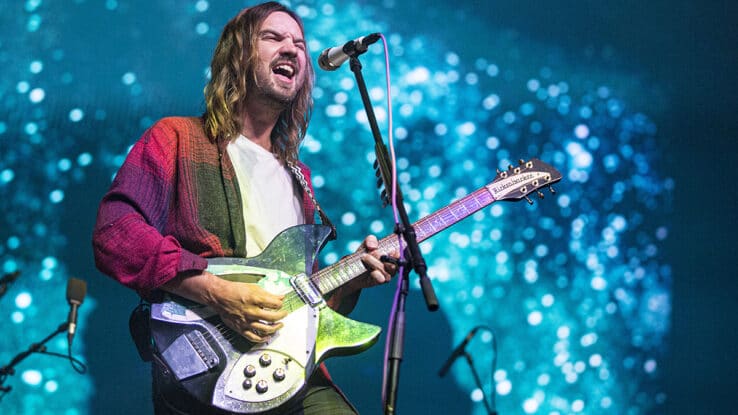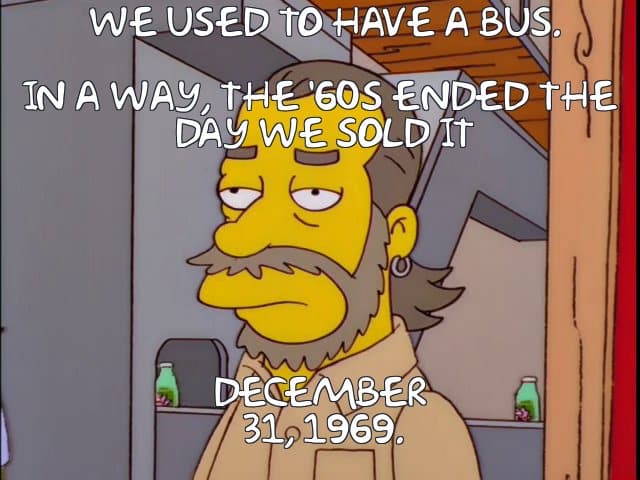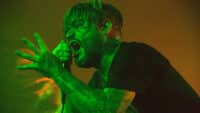Music

WTF is...?
WTF is… psych rock?
Take a trip down the rabbit hole as we dive into the expansive world of this heady sub-genre
Psychedelic rock, or psych rock for short, is a sub-genre of rock originating in the late 1960s that is influenced and inspired by the psychedelic experience.
Duh! But what does it all meaaaan, Basil?, as one swinging sixties dandy put it himself? Fear not, we’re here to guide you through this freaky, kaleidoscopic lava lamp of a concept, on a trip from the invention of the word all the way to its influence on the mainstream. We’ll explain its defining characteristics, while meeting its key players – from Jefferson Airplane to Tame Impala. Strap in.
Psychedelia
The Academics
The word ‘psychedelic’ was coined in the late 50s by the English psychiatrist Humphrey Osmond and was popularised by his friend, the writer Aldous Huxley. It came at a time when academics became enthralled by the rumoured mind-expanding effects of substances such as psilocybin, found in certain mushrooms and cacti, and the recently discovered LSD. As scientists enjoyed doing back then, Osmond turned to the Greek language to give this phenomenon a name, combining the words for mind or soul (psyche) and manifesting (deloun). He wrote to Huxley in a letter: “To fathom hell or soar angelic, just take a pinch of psychedelic.”
Huxley took a sample of one of these psychedelics called mescaline and basically sat in his garden looking at things. It sounds boring, but his notes became 1954’s The Doors Of Perception, a wildly influential text for a generation that were about to become the 60s’ famed counterculture. Where do you think The Doors got their name?
The Hippies
Inspired by texts such as these, by Huxley, and by the free-thinking jazz-loving beatniks of the 50s (who had already begun taking psychedelic substances to help them think even freer and presumably love jazz even more), vast swathes of young people in the 60s began rebelling against the ‘straight’ and ‘square’ shackles of post-war society.
The hippy movement probably doesn’t need too much expanding here, you know the long-haired, peace sign cliches by now, but it’s important to note the counterculture wasn’t ever just about getting off your head. This was a time of highly influential anti-war protest, civil rights activism, arts and entrepreneurship (especially in live music), as well as being a springboard for many types of alternative and more inclusive ways of looking at the world.
Buuuut, these kids did also enjoy getting off their heads. Hedonism, art, politics and philanthropy were all closely intertwined, as if you could only really achieve an enlightened view of the world via the portal of psychedelics. But they certainly had fun in the process, as they followed the mantra “Turn on, tune in, drop out” at love-ins and music festivals throughout the decade. It became such a defining part of their culture that the term psychedelia became the catch-all for the expression of this experience in its vibrant and kaleidoscopic art, fashion and, most importantly, music.
The bands
Psychedelia aside, rock and roll was the most unifying force for teenagers and young adults on both sides of the Atlantic throughout the early 60s thanks to Beatlemania. But from around 1965 onwards – the year Bob Dylan plugged in his guitar and folk turned into folk rock – a discernible scene of musicians began laying down their psychedelic experiences on record. The capital of this scene is widely accepted as the Californian coast, specifically the Haight-Ashbury neighbourhood in San Francisco, where the likes of Big Brother and the Holding Company, Jefferson Airplane and The Grateful Dead played to tripping crowds in venues such as The Fillimore, Avalon Ballroom and The Matrix.
The birth of the rock festival around this time gave a meeting place for psych rock bands and the far out masses. One of the movement’s first major come-togethers was the 1967 Monterey International Pop, a marquee moment of the famed Summer of Love that saw Jimi Hendrix set his guitar alight and introduced the world to Janis Joplin. Two years later there was Woodstock, by far psych rock’s most famous cultural event, as hundreds of thousands took dodgy brown acid and freaked out to the likes of Canned Heat, Santana and Sweetwater.
You didn’t have to be wearing flowers in your hair in San Francisco to be psych rock, though. One of the earliest pioneers of the genre were The 13th Floor Elevators from Austin, Texas, who even called their 1966 debut The Psychedelic Sounds… That same year, across the pond, The Beatles released Revolver, which famously catalogued their own dabbling with LSD for the first time. Songs such as ‘She Said She Said’ hint to that fateful night, but later on Sgt. Pepper’s… (1976) the influence would be less subtle on ‘Lucy In The Sky With Diamonds’.
Pink Floyd‘s early material also established them as champions of British psychedelia before they rocketed into space to pioneer cosmic prog rock. Fellow Brits Cream had always blown minds with their bluesy solos, but you didn’t need to hear ‘Strange Brew’ to appreciate their venture into psych rock on Disraeli Gears (1967) – just look at the cover. Likewise, The Rolling Stones had their turn at Sgt. Pepper’s fun on Their Satanic Majesties Request (1967).
Not all rock from the late-60s era was necessarily psychedelic, and though most of it is lumped in to this heady time, purists think otherwise. So, what were the defining sonic qualities that made a rock song psychedelic?
The Sound
Let’s start with the lyrics. Inspired by or even written during a psychedelic experience, you can expect some out there and surrealist imagery. “I am he as you are he as you are me/ And we are all together,” sang John Lennon as he marvelled at the interconnectedness of the universe in one of the least silly lines of ‘I Am The Walrus’. The song’s title character was taken from Lewis Carroll’s Alice In Wonderland, whose trippy undertones weren’t lost on Jefferson Airplane in ‘White Rabbit’: “One pill makes you larger/ And one pill makes you small…”. These songs tended to look beyond the classic love narratives and focussed on unlocking a heightened state of mind. Childhood and nature were often invoked, which all tied in to the search for a communal utopia at odds with the times.
Given that psychedelia was all about recalibrating your mind from the conditioning of Western society, it’s unsurprising that many psychedelic rock bands turned to Eastern influences. Adopting instruments such as the sitar or tabla drums were an easy win to transport the listener afar, such as on The Beatles’ ‘Norwegian Wood,’ though the melodic modes of Indian ragas were also implemented. The sitar maestro Ravi Shankar was looked upon as a hero in this scene and was a special guest at Woodstock – though he took the sincerity of his doped-up audience with a pinch of salt.
The hypnotic, dreamy effect of instruments like the sitar was a key principle of psych rock music, and was also achieved through developments in studio technology and experimentation. A new wave of producers including George Martin, Shel Tamy and even The Beach Boys’ own Brian Wilson played with reverse tape effects, double tracking, heavy reverb and even adopted guitar feedback as an instrument of its own. Blistering solos and track lengths that roamed far beyond the classic three minute parameter, as on Hendrix’s ‘Voodoo Chile’, also helped mimic the intoxicating effects of psychedelics.
The baroque sounds of organs and harpsichords were also rife, particularly from the likes of The Doors and The Zombies. You could argue these sounds gave their rock an otherworldly, childlike quality, but maybe they just enjoyed playing the organ.
Psych rock through the ages

70s
Psych rock music, in its original form, died as the 60s came to a close. The police cracked down on the use of forbidden substances, while events such as the murder at Altamont festival, plus the drug-induced deaths of Jim Morrison, Hendrix and Joplin shone an irreversible darkness on the hippy movement. Rock music in general became more polarised in the 70s as one half of it soared to commercial highs and the other rebelled with the birth of punk. But psychedelia lived on in the progressive rock of Pink Floyd and Brian Eno, or through soul music with the likes of Isaac Hayes, Shuggie Otis and Sly and the Family Stone. Many believe psychedelic soul’s rich use of orchestration helped inspire the birth of disco.
80s
In the 80s, movements such as California’s Paisley Underground, featuring bands including The Dream Syndicate, The Rain Parade and The Long Ryders, were nostalgic for classic 60s psych rock. But even then this sound grew into the new strands of jangle pop, garage rock and post punk. Psychedelia’s potent and escapist origins were instead reawakened in the emergence of acid house in Chicago clubs and British raves.
90s
Acid house continued filling parties and warehouses throughout the 90s, which also worked its way back to guitar-wielding musicians, such as Glasgow’s Primal Scream, or the Madchester posse of The Happy Mondays, The Charlatans and The Stone Roses, inspiring them to take their indie rock to headier heights. You can hear the mesmerising effects of psych rock in the sonic swathes of shoegaze and to some extent grunge, too.
00s and beyond
The noughties saw bands such as The Flaming Lips and Animal Collective ingest some of classic psych rock’s expansive and unpredictable qualities – plus some of its musical cues – into the framework of indie rock, with samples and heavy use of synths. Tracks such as ‘Lysergic Bliss’ by of Montreal wore this influence on its sleeve.
Other bands such as Wooden Shjips and Sweden’s Dungen created psych rock with a retro quality, harking back to the grooves and tones of the 60s – as on the latter’s 2008 album 4. This nostalgia continued into the next decade, as the likes of Unknown Mortal Orchestra, Melody’s Echo Chamber, Temples and Kevin Parker’s Tame Impala all revelled in euphoric guitar jams like a true 60s freak out. Around this time came King Gizzard & The Lizard Wizard, whose debut, Willoughby’s Beach, would have fitted perfectly in 1967, but this band soon became their own prolific psychedelic phenomenon. In fact, they probably deserve a WTF is… of their own.
The authentic production and songwriting chops of Tame Impala’s first few albums certainly did a lot for the psych rock revival of the 2010s, but nothing has pushed the sub-genre into the mainstream more today than his 2015 album Currents. The dry, groovy drums, hallucinatory vocals and searing guitar lines are all there, but they now come awash with the clean and high definition touches of dance music. The effect was a pop sensation that still dominates the charts today. Unconvinced? Just take a look at the soundtrack from the biggest pop culture moment of 2023…
Psych rock bands you should know
Fancy some psych rock of your own? Head to Manchester Psych Fest on Saturday 2 September









